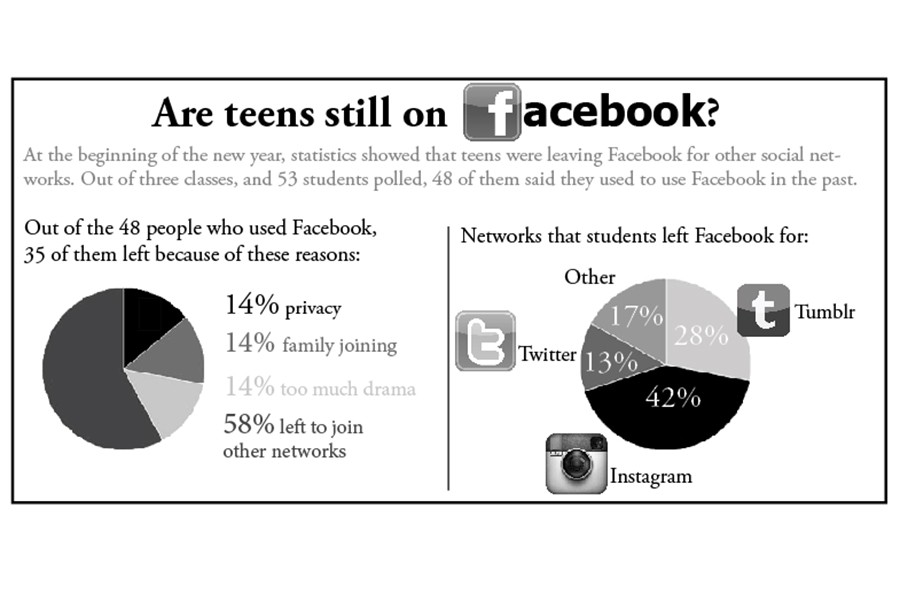Social media causes division between parents, children
Teenagers naturally look for ways to escape the control of their parents. They are at the point where they are so close to the taste of freedom that lies just beyond their grasp after high school. They don’t want adults, especially family members, constantly checking up on them and reviewing every status they post or every picture they share on social media websites.
It’s the social divide between the next generation of young adults and older adults — the struggle of one group desperately trying to hang onto the control while the other lunges out to break off a piece of it for themselves. This control of their lives has taken up much of the way that people use social media websites.
To adults it may seem like an unruliness or restlessness growing in the pit of every teen, but it should instead be looked at as a way for teenagers to begin claiming their independence and taking out their stake in life, to begin carving something out for themselves.
Because of this, it seemed like social networking was especially populated by teenagers since they quickly pick up on how to use sites like Facebook and Twitter. But in recent studies conducted by the Pew Research Center, more and more adults have been making their mark on such social media websites.
According to these studies, as of September 2014, nearly three-quarters of online adults use social networking sites, with 71 percent of online adult users active on Facebook.
Social media is now even a tool for employers to use and check up on anyone they are looking to hire to get an idea of the kind of person the employee is, determining whether that person is “adequate” enough for the job.
In this sense it isn’t just adults who are increasing their presence on social networking sites, but companies and businesses, as well. This benefits such companies in many aspects since their name will be present where it will surely be seen by millions who use the Internet.
With the younger adults becoming more independent, they have been dropping from certain websites like Facebook and migrating to more visually appealing ones, such as Instagram.
Some stores have trailed along, determined to capture the attention of as many age groups as possible by appealing to them.
Social media websites also have their own apps available to download onto phones.This makes it easier to become glued to a phone because the apps are there, but people shouldn’t automatically jump to the conclusion that always using a phone means a person is always wasting time on the Internet.
That person may be conducting business-related activities or even using their phones for research purposes related to school work.
I admit that since I have purchased a smartphone, I have been spending a lot of my time using it. But I use it to contact people, more often than not through the Internet, and read a lot of articles regarding events happening in the world.
Because teenagers and young adults are constantly using social websites and their apps, older adults may assume that the only thing these age groups do while on the sites is gossip among their friends and dig around for drama to get in on.
However, the sites also allow a means of communication that can be easier to use than with just a cellular device. That is my main reason for using social websites. I can easily find people I need to talk to when I can’t find them in person.
Yes, I am in constant contact with sites like Twitter and Facebook, but that is mainly for the purpose of obtaining all kinds of information from different people and news crews to help me keep myself informed of what is happening in the world. I also stay connected to important sources this way, like adult figures I can get help from when I need it.
So of course there is a rift between teens and adults on social media because one exists between the two age groups in society.
It shouldn’t be automatically presumed that this means teenagers are being sneaky and mischievous; they can be just trying to pull themselves forward in the world on their own.






